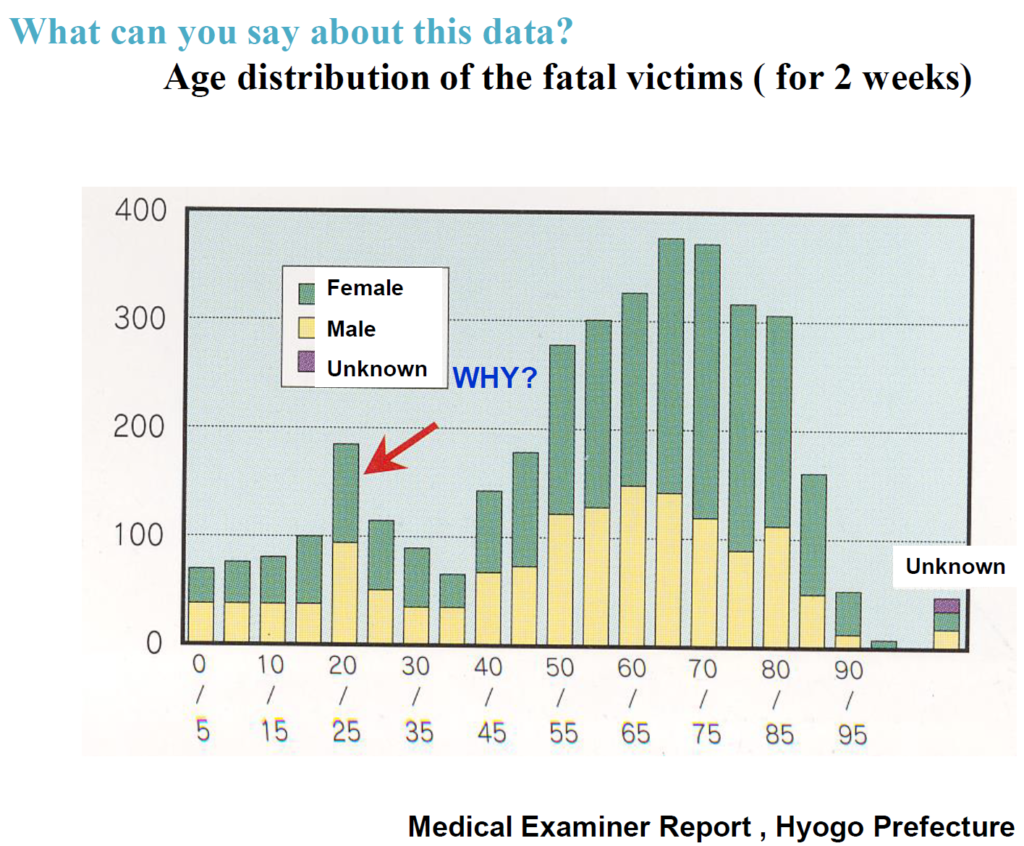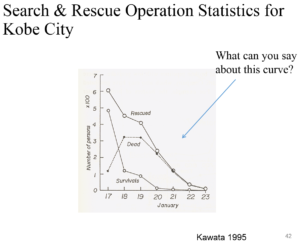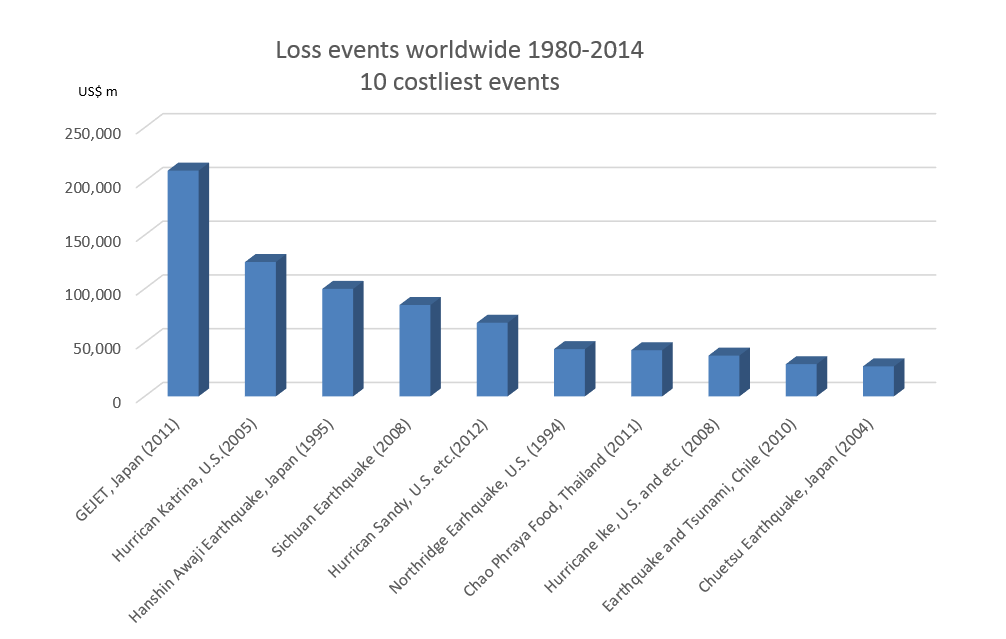The 1995 Kobe earthquake taught us a lot of lessons. Today I am going to give you the following two questions:.
1) Why were there so many early 20s victims?
2) Which floor is more dangerous, 1st or 2nd?
1) Please look at the following picture. You can see the victims’ age distribution. Females and elderlies are more likely to be victimized because of their lack of physical strength. However, why did so many people in their early 20s die? Yes, they were university students. There are many universities in Kobe. Students tended to be less rich. They tended to stay on the 1st floor in cheaper wooden apartments.

2) You already know the answer. Of course, the first floor is more dangerous, especially in a wooden house. 1981 is the year in which the Japanese government set the building code. So the buildings, apartments, etc. built after the year tended not to be destroyed by the earthquake, including the Kobe earthquake.

Photo: Dr.Takashi Inokuchi
We should learn the lessons from the disaster; this is the best thing we can do for the victims.


